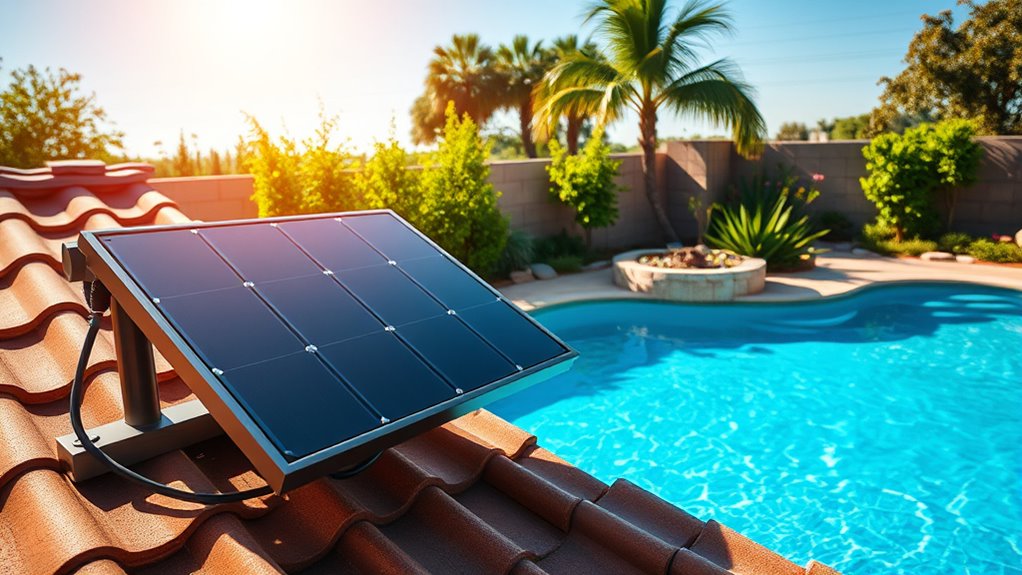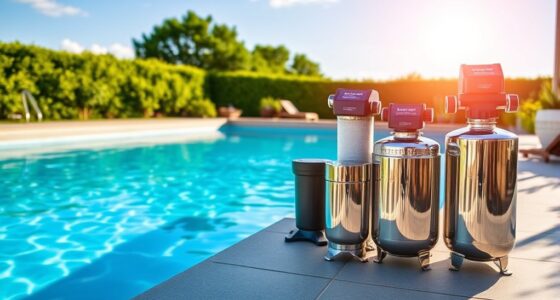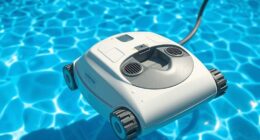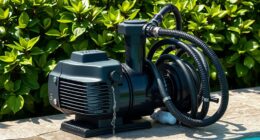Solar pool heaters are a fantastic way to warm your pool while being kind to the environment. They efficiently capture sunlight, reducing your heating costs and carbon footprint. Plus, with minimal maintenance, these systems offer long-lasting benefits and promote eco-friendly practices in pool care. You can enjoy your pool for longer during the season without relying on traditional energy sources. If you’re curious about how these systems work and their specific components, there’s more to uncover.
Key Takeaways
- Solar pool heaters utilize renewable energy from the sun, significantly reducing reliance on fossil fuels for heating.
- They maintain comfortable swimming temperatures while minimizing carbon footprints and promoting sustainability.
- By extending the swimming season, these heaters contribute to eco-friendly practices and enhance the overall pool experience.
- Government incentives may be available, making solar pool heaters a cost-effective investment for environmentally conscious homeowners.
- Durable materials and minimal maintenance ensure longevity, further supporting a greener lifestyle and reducing waste.
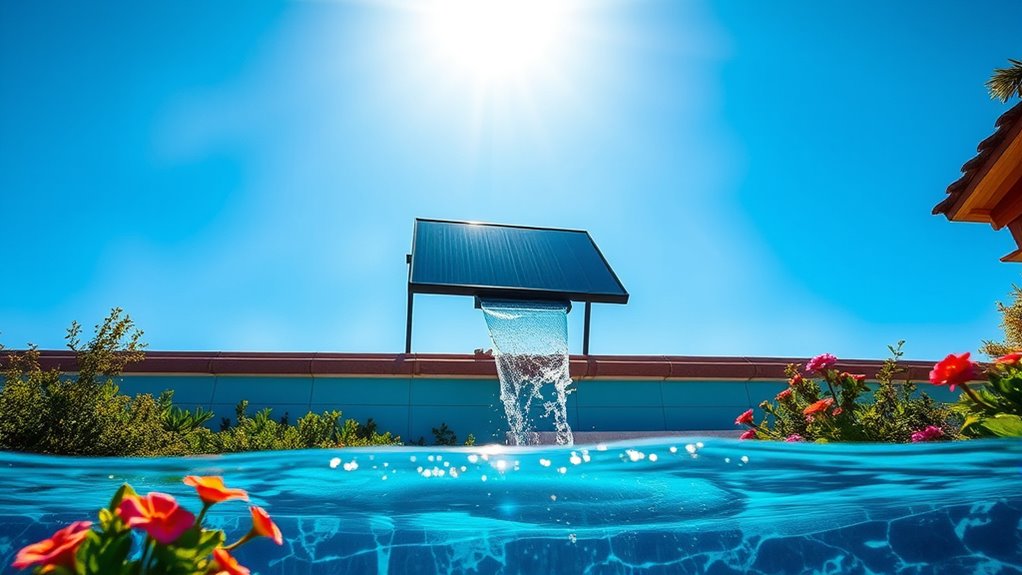
If you’re looking to extend your swimming season without breaking the bank, solar pool heaters might be the perfect solution. These systems efficiently use sunlight to warm your pool water, cutting down on operating costs while allowing you to enjoy your pool for a longer stretch each year. The setup typically involves solar collectors, installed on your roof or nearby structures, along with pumps and pipes to circulate the water.
Extend your swimming season affordably with solar pool heaters that harness sunlight to warm your pool water efficiently.
When you run your solar pool heater, cold water from your pool circulates through the solar collectors, where it absorbs heat from the sun before returning to the pool warmer than before. This process helps you maintain a comfortable swimming temperature while minimizing your carbon footprint, using renewable energy instead of fossil fuels.
Plus, solar heaters can be customized to fit various pool sizes and local climates, making them adaptable to your specific needs. The key components of solar pool heaters include durable solar collectors, often made from high-grade polymers, which are designed to withstand harsh weather conditions.
Selective coatings on these collectors enhance heat absorption, particularly in cooler climates. Your system will also include pumps and valves that manage water circulation and temperature, guaranteeing that you get the finest possible results. To maximize efficiency, thermos-like glass panels help prevent heat loss.
One of the most significant benefits of installing a solar pool heater is the cost savings. You’ll notice a substantial reduction in operating costs compared to traditional heaters. These systems aren’t only eco-friendly, utilizing renewable energy, but they also promise longevity and require minimal maintenance.
Some regions even offer government incentives, including tax breaks, which can help offset your initial investment. If you’re in a sunny region, your solar pool heater will perform at its best, but it can also adapt to various climates with the right design.
Be sure to mount your solar panels facing south and at an angle that matches the summer equinox for maximum sunlight exposure. Keep shading to a minimum during the day to enhance performance.
Lastly, solar pool heaters are built from durable materials that resist leaks and corrosion. Regular inspections will guarantee your system runs efficiently, and should any components need replacing, you can do so easily, extending the overall life of your heater.
Embracing this eco-friendly option means you can enjoy your pool longer while being kinder to the planet.
Frequently Asked Questions
How Long Do Solar Pool Heaters Typically Last?
Solar pool heaters typically last between 15 to 30 years, depending on various factors.
You’ll find that the materials used, like UV inhibitors, enhance their durability. Proper maintenance is essential, so keeping an eye on water quality and system pressure can extend their lifespan.
While you might invest more initially, the long-term savings and reliability make it worth considering.
Just remember, the right conditions can greatly influence how well they perform over time.
Can Solar Pool Heaters Work in Cloudy Weather?
Imagine a sunny day transforming your pool into a warm oasis.
But, can solar pool heaters still perform when clouds roll in? Unfortunately, they can struggle in cloudy weather, as sunlight diminishes greatly.
You’ll notice inconsistent heating, leaving your pool cooler than you’d like.
If you’re in a region with frequent overcast skies, it’s wise to contemplate supplementary heating options to keep your swimming experience enjoyable year-round.
What Maintenance Do Solar Pool Heaters Require?
Solar pool heaters require regular maintenance to guarantee they operate efficiently.
You should clean the solar collectors every six months to remove dirt and debris.
Inspect the system for wear and leaks, and maintain proper pool chemistry to prevent damage.
Winterize by draining water and covering panels during cold months.
Regularly check components and replace worn parts as needed.
Document your maintenance actions to track the condition and extend the lifespan of your system.
Are Solar Pool Heaters Compatible With All Pool Types?
When you think about fitting a round peg into a square hole, compatibility comes to mind.
Solar pool heaters are versatile and can work with both above-ground and in-ground pools, regardless of materials like vinyl, fiberglass, or concrete.
They often feature adjustable designs to suit different sizes and configurations.
How Much Space Is Needed for Solar Panels?
To determine how much space you need for solar panels, consider your pool size.
For a standard 15×30-foot pool, aim for around 338 square feet of collector area, ideally covering half of the pool’s surface.
If you want year-round heating, you’ll need to cover the entire pool area, so plan for about 450 square feet.
Always guarantee your panels get 4-6 hours of unobstructed sunlight daily for maximum efficiency.
Conclusion
As you step outside on a chilly morning, the promise of a warm, inviting pool beckons you. Imagine feeling that sun-kissed water enveloping you, all thanks to a solar pool heater working tirelessly behind the scenes. You’re not just enjoying a swim; you’re embracing an eco-friendly choice that nurtures the planet. But what if you could enhance this experience even more? The possibilities await, and the choice is yours—will you take the plunge into a greener future?
